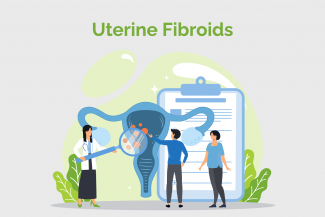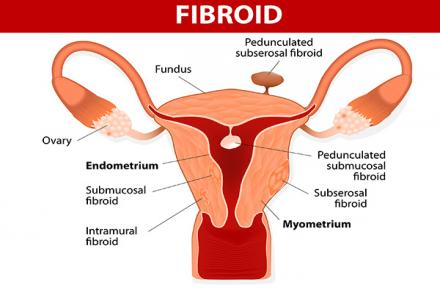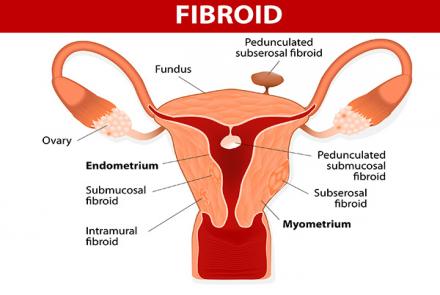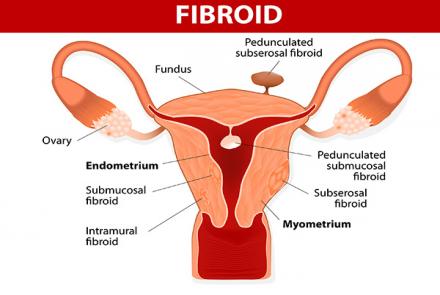
Types of Uterine Fibroids:
Submucosal: These fibroids are located just underneath the lining of uterus, protruding into the uterus. They cause heavy bleeding, long periods and irregular bleeding between the cycles.
Subserosal: These fibroids are located outside the uterus either in the muscle or hanging outside the uterine wall. They cause bulk symptoms, such as pain and pressure in the pelvis, abnormal and excessive menstrual bleeding, pressure on spinal cord.
Intramural: These fibroids are located in the muscle of the uterus, either protruding into the uterine cavity or outside the uterine cavity. They put pressure on the spinal cord, rectum and pelvis, but are asymptomatic unless they grow in size.
Pedunculated: These fibroids are outside the wall of the uterus, attached to the uterus through a stalk. It puts pressure on the spinal cord, thus causing lower back pain.
Cervical: These fibroids are located in the neck of the uterus. They may cause excessive and abnormal bleeding.
Complications
Women with fibroids can have the following problems:
- Heavy period
- Fatigue
- Depression
- Abdominal Pain
- Constipation
- Premature birth
- Miscarriage
- Infertility: fibroids may prevent implantation, restrict growth of embryo; block or distort the fallopian tube; prevent passage of sperms from the cervix to the fallopian tube
- Leiomyosarcoma: A form of cancer that develops inside fibroids














